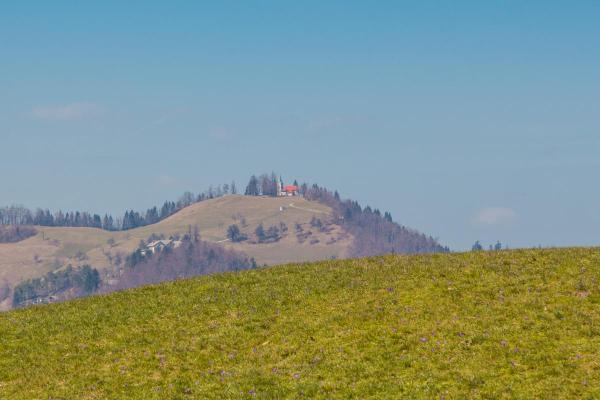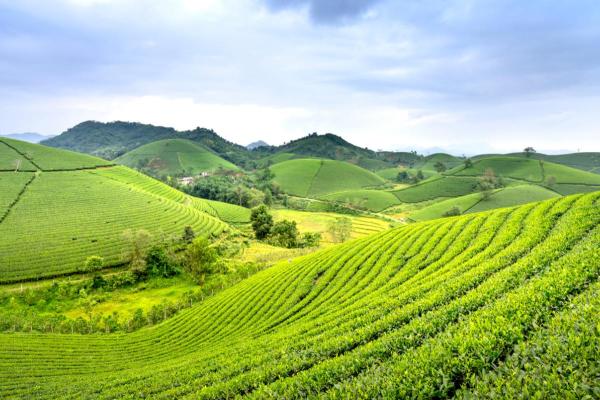
The field of topography is an important aspect of physical geography. It involves the study of the surface of landforms with a particular emphasis on elevation. A hill is a natural landform which is elevated from the area surrounding it. This means they don't have to start at sea level since some may only begin on already elevated terrain. Hills are often compared to mountains since they are both elevated landforms. Lower altitudes and gentler slopes are more common to hills, rarely exceeding 700 m above the surrounding terrain. Although they are not as imposing as mountains, hills have their own geographic and even cultural importance. We learn more as thedailyECO asks what is a hill in geography?
What is a hill in geography?
A hill is a naturally elevated landform which stands higher than the terrain which surrounds it. It is generally lower in altitude and extension than a mountain. They form over millions of years due to various geological processes, such as erosion, tectonic movement or volcanic activity. There are also artifical or manmade hills, but these are much less common.
Mountains usually have sharp peaks and altitudes higher than 700 meters above sea level. In comparison, hills usually have softer and more rounded shapes. They can also have steep slopes and rocky areas depending on their geological composition.
Hills also have a significant impact on the local climate and surrounding ecosystems. They can act as natural barriers to winds and air masses, influencing precipitation and temperatures in nearby regions. They also provide refuge for numerous animal and plant species. Many of these are specifically adapted to the particular altitude, soil and sun exposure conditions offered by these altitudinous terrains.
In many cases, hills have significant cultural and symbolic value for human communities. Throughout history, they have been used as reference points for navigation, sacred sites for religious ceremonies or even as natural fortresses for military defense.
You can discover how altitudes affect flora and fauna with our article sharing the different Andean plants and animals.

Types of hills in geography
There are various types of hills depending on a range of geographical factors. These include their geological origin, morphology and location. Some of the different types of hills include:
- Isolated hill: also known as an island hill, this is an elevation that stands alone from other mountain formations. These hills generally stand out on flat terrain and are often formed by erosion, leaving a more resistant structure in the center.
- Witness hill: this type of hill is the remnant of an ancient plateau or larger formation that has been eroded over time. They remain as vestiges of the previously existing relief and usually have a tabular or plateau-like shape at their summit. They bear ‘witness’ to this previous landform.
- Volcanic hill: these types of hill arise as a result of volcanic activity, either from the accumulation of solidified lava, volcanic ash or pyroclastic material. They usually have well-defined cones and may sometimes be inactive or extinct, transforming into hills with abundant vegetation. Similarly, there are different types of volcanoes depending on varying factors.
- Residual hill: these hills are the result of differential erosion, in which the softer parts of the terrain are worn away and disappear. The more resistant materials remain as isolated hills.
- Ridge or range hill: unlike isolated hills, these are part of connected elevation systems, such as mountain ranges or sierras.
How is a hill is formed?
As we have seen by looking at the different types of hill in geography, some are formed by volcanic activity. This is one of a a variety of geological processes that form hills, developing over millions of years. Although each hill has its own geological history, the most common mechanisms include tectonic activity, differential erosion and volcanic processes:
Tectonic processes
Hills can arise as a result of movements in the tectonic plates that make up the Earth's crust. These movements can be of various types:
- Folding: when two tectonic plates collide, the resulting pressure can cause rock layers to fold upward, forming elevations on the surface in the process.
- Faults and uplifts: in some cases, tectonic forces cause fractures in the Earth's crust known as faults. If a portion of the land is elevated relative to the surrounding area along these faults, a subsequent hill can form.
Volcanic activity
Many hills originate from ancient volcanic eruptions. When magma rises from the Earth's interior and solidifies on the surface, it can form volcanic cones. These erode over time to become hills.
Learn the difference between magma and lava with our related guide.
Differential erosion
This process occurs when materials of varying strength are exposed to the elements. These include wind, rain and temperature changes. The softer rocks erode rapidly, while the stronger ones remain. Residual hills form as a result.
In addition to differential, discover the different types of erosion in geography.
Sedimentation and accumulation of materials
In some cases, hills are formed by the accumulation of sediment transported by rivers, wind or glaciers. These materials compact and solidify over time, creating elevations that eventually become hills.
Glaciers are responsible for the formation of various landforms, as you can see with our guide explaining how fjords are formed.
Subsequent erosive factors
Even after a hill forms, it continues to be shaped over time. Wind, rain, snow and temperature changes continue to wear down its flanks and summit, giving it unique shapes and characteristics. This explains why two hills of similar origin can have completely different shapes.

Difference between hill vs. mountain
While they are both essentially elevated landforms, there are certain defining characteristics which explain the differences between mountains and hills. They include the following:
Height and elevation
- Hill: a hill is generally a moderate elevation of land, with heights rarely exceeding 700 meters above the surrounding ground level.
- Mountain: are usually much higher, with altitudes easily exceeding 1,000 meters above sea level.
Slope and profile
- Hill: they usually have gentler slopes and less pronounced peaks, facilitating the growth of vegetation and the presence of natural paths in some cases.
- Mountain: much steeper slopes and abrupt summits, often with rocky walls and being challenging to climb.
Discover the different parts of a mountain in geography with our related guide.
Geological formation
- Hill: is usually formed by differential erosion processes, moderate volcanic activity or deformation of rock layers without intense tectonic activity.
- Mountains: most are formed by the collision of tectonic plates, folding and faulting processes, or massive volcanic activity. Our related guide goes into more detail about orogenesis and how mountains are created.
Climate and vegetation
- Hill: being at a lower altitude, they usually have more temperate climates and richer soils. This allows for a greater diversity of plants and animals.
- Mountains: often present extreme climates, with low temperatures, strong winds and less oxygen at high altitudes. This limits the type of vegetation that can survive there, often relegating plant life to mosses, lichens and, in some cases, small cold-resistant shrubs.
Human and cultural use
- Hill: these are more accessible for human activities such as agriculture, livestock and hiking. Many hills have symbolic or spiritual value for local cultures, often as places of worship or landmarks.
- Mountain: although they can also have cultural and spiritual significance, mountains often provide greater physical and symbolic representation. They are symbols of greatness and strength, being as ‘immovable as a mountain’, something not commonly used in reference to hills.
Since mountains have such great altitudes, they form their own ecosystems and influence weather patterns. We explain more in our article asking what is the mountain climate?
If you want to read similar articles to What Is a Hill in Geography?, we recommend you visit our Environment (other) category.
- Differencias. (n.d.). Difference between hill and mountain.
https://www.diferencias.cc/cerro-montana/ - Rosenberg, M. (2025, May 5). Difference Between Hills and Mountains. ThoughtCo.
https://www.thoughtco.com/difference-between-hill-and-mountain-4071583